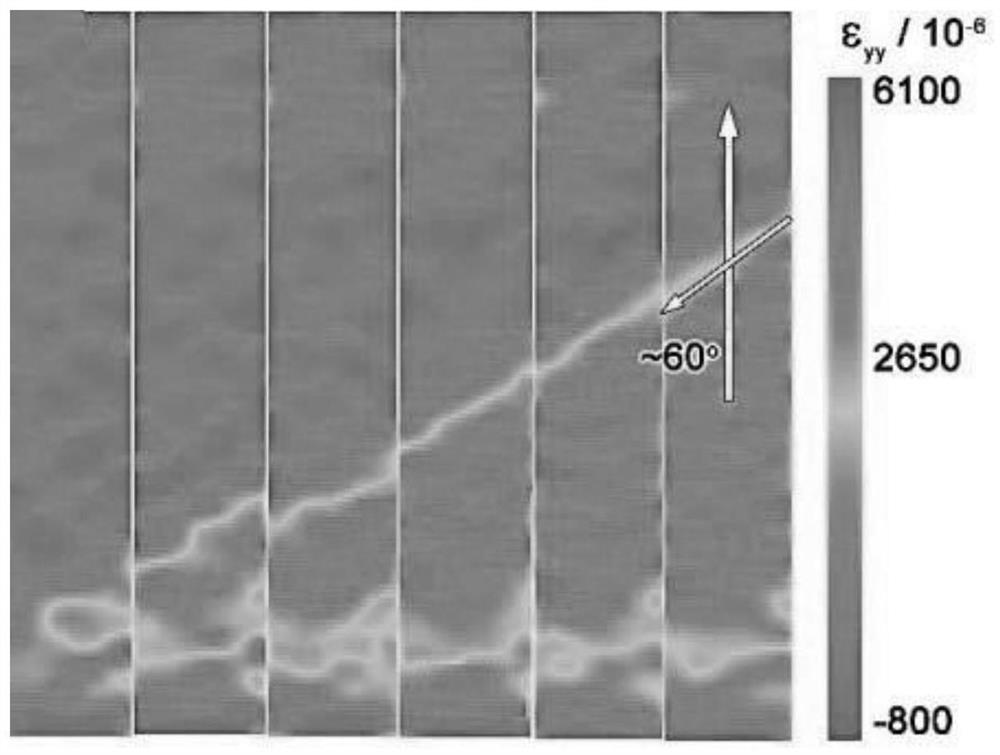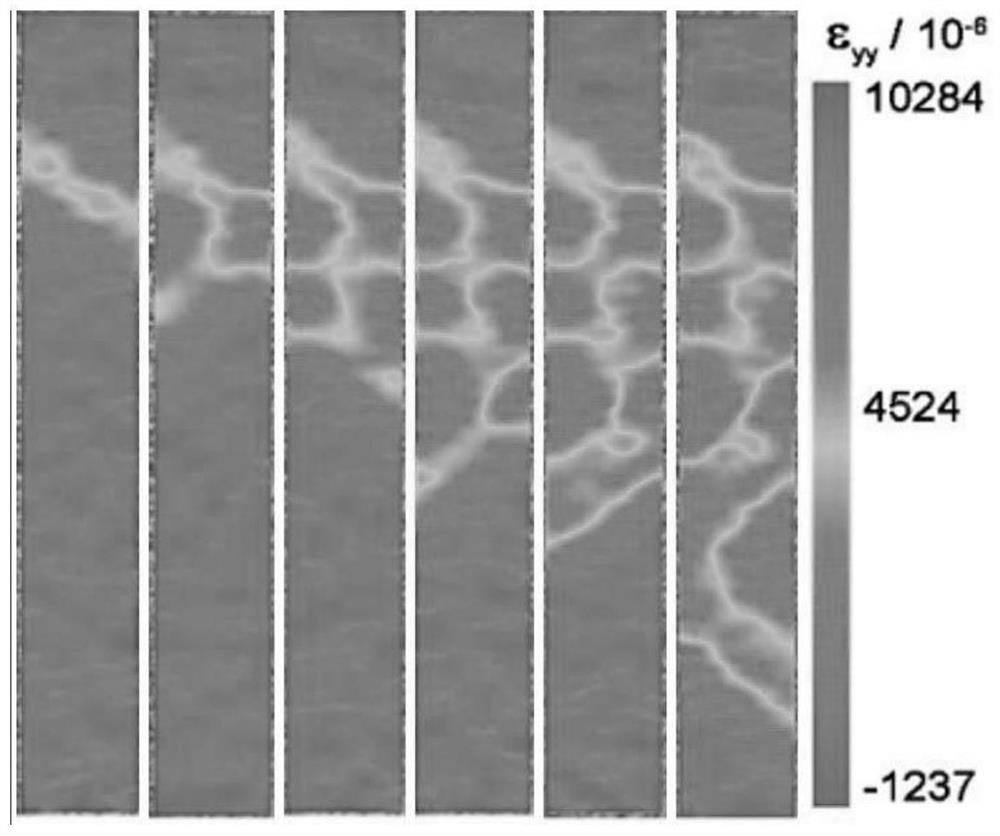System and method for detecting PLC effect of alloy
A detection system and alloy technology, applied in the direction of applying stable tension/pressure to test the strength of materials, measuring devices, and preparation of test samples, can solve the problems that it is difficult to observe the nucleation, proliferation and space-time evolution characteristics of alloy PLC bands , to achieve the effect of strong anti-natural interference ability, simple equipment and high measurement accuracy
- Summary
- Abstract
- Description
- Claims
- Application Information
AI Technical Summary
Problems solved by technology
Method used
Image
Examples
Embodiment 1
[0053] The composition (wt.%) of the alloy used in this example is as follows: Co 30%, Cr 20%, Ti 1%, Al 0.65%, W 1.5%, Mo 4%, C 0.02%, Zr 0.015%, B 0.015%, Ni in the balance.
[0054] Use the following steps to test the PLC effect:
[0055] Step (1): The above-mentioned metal material is processed into a plate-shaped tensile sample by wire electric discharge cutting, and the gauge length section of the prepared tensile sample has a size of 25mm×5mm×1.25mm;
[0056] Step (2): Evenly spray the surface of the tensile sample with a high-temperature-resistant white primer. The thickness of the white primer is 0.2mm. Put the tensile sample in a drying oven and dry it at 80°C for 15 minutes; then spray a high-temperature-resistant black paint. The black paint is randomly attached to the white primer in small spots. Put the tensile sample into the drying oven and dry it at 80°C for 10 minutes to form high-temperature scattered spots;
[0057] Step (3): Heat the heating and holding ...
Embodiment 2
[0061] The composition (wt.%) of the alloy used in this example is as follows: Co 25%, Cr 15%, Ti 4%, Al 1.5%, W 1.5%, Mo 3%, C 0.02%, Zr 0.015%, B 0.015%, Ni in the balance.
[0062] Use the following steps to test the PLC effect:
[0063] Step (1): The above-mentioned metal material is processed into a plate-shaped tensile sample by wire electric discharge cutting, and the gauge length section of the prepared tensile sample has a size of 25mm×5mm×1.25mm;
[0064] Step (2): Spray evenly the surface of the tensile sample with a high-temperature-resistant white primer. The thickness of the white primer is 0.3 mm. Put the tensile sample in a drying oven and dry it at 100°C for 15 minutes; then spray with a high-temperature-resistant black paint , the black paint is randomly attached to the white primer in small spots, put the tensile sample into the drying oven, and dry at 100°C for 10 minutes to form high-temperature scattered spots;
[0065] Step (3): Heat the heating and ho...
Embodiment 3
[0069] The composition (wt.%) of the alloy that adopts in the present embodiment is as follows:
[0070] Co 25%, Cr 15%, Ti 4%, Al 1.5%, W 1.5%, Mo 3%, C 0.02%, Zr 0.015%, B 0.015%, Ni in the balance.
[0071] Use the following steps to test the PLC effect:
[0072] Step (1): The metal material to be tested is processed into a plate-shaped tensile sample by WEDM, and the gauge length section of the prepared tensile sample has a size of 25mm×5mm×1.25mm;
[0073] Step (2): Spray evenly the surface of the tensile sample with a high-temperature-resistant white primer. The thickness of the white primer is 0.5 mm. Put the tensile sample in a drying oven and dry it at 150°C for 15 minutes; then spray with a high-temperature-resistant black paint , the black paint is randomly attached to the white primer in small spots, put the tensile sample into the drying oven, and dry it at 150°C for 10 minutes to form high-temperature scattered spots;
[0074] Step (3): Heat the heating and hol...
PUM
| Property | Measurement | Unit |
|---|---|---|
| thickness | aaaaa | aaaaa |
| thickness | aaaaa | aaaaa |
| thickness | aaaaa | aaaaa |
Abstract
Description
Claims
Application Information
 Login to View More
Login to View More - R&D
- Intellectual Property
- Life Sciences
- Materials
- Tech Scout
- Unparalleled Data Quality
- Higher Quality Content
- 60% Fewer Hallucinations
Browse by: Latest US Patents, China's latest patents, Technical Efficacy Thesaurus, Application Domain, Technology Topic, Popular Technical Reports.
© 2025 PatSnap. All rights reserved.Legal|Privacy policy|Modern Slavery Act Transparency Statement|Sitemap|About US| Contact US: help@patsnap.com



